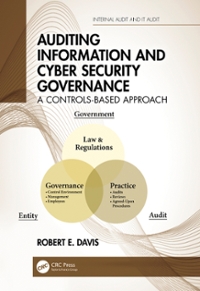Question
1. Reserves Mr. Wong sold a property on Jan 1, 2015 for $500,000 (to demonstrate and simplify the issue, assume cost was nil). Per the
1. Reserves
Mr. Wong sold a property on Jan 1, 2015 for $500,000 (to demonstrate and simplify the issue, assume cost was nil). Per the sales contract, he would receive $100,000 at the end of each year for the next five years. In 2017, Mr. Wong passed away. Whats the additional amount his legal representative needs to include in his terminal tax return? What challenge will this create?
Had Mr. Wong not died:
2015 2016 2017 2018 2019
Income or gain 500,000
Old reserve 400,000 300,000 200,000 100,000
New reserve (400,000) (300,000) (200,000) (100,000)
Taxable income 100,000 100,000 100,000 100,000 100,000
Death in 2017:
2015 2016 2017
Income or gain 500,000
Old reserve 400,000
New reserve (400,000) (300,000)
Taxable income 100,000 100,000
Challenges: ?
2. Pension Income Splitting
Trevor, 78, died in August. Prior to death, he didnt receive any eligible pension income; however, his spouse, Nicole (70), did. For the year of Trevors death, Nicole received $3,500 each month from a registered pension plan and $1,000 monthly from a RRIF (all eligible pension income).
Required:
- In preparing her tax return for the year, Nicole wonders what portion of her eligible pension income could be split with Trevor for the year,
- In order to transfer, what documentation must be completed, where to include the document, by whom, and how?
3. RRSP
1) Jim has some RRSPs and he intends to leave the unused RRSPs to his wife Sarah. You are his tax advisor and he asks your opinion on if he should name his estate as the beneficiary or name Sarah as the beneficiary.
It is generally a good idea to name Sarah (spouse) as the beneficiary rather than Jims estate, because the RRSPs can be rolled over to Sarah without immediate tax consequences for both Jim and Sarah (tax deferral). It is when Sarah dies that the RRSPs balance will be reported as income in Sarahs terminal tax return and taxed by the marginal tax rate of Sarahs (assume Sarah is not re-married).
In addition, naming Sarah as the beneficiary of his RRSPs can also save probate fees as it will be outside of the will and will not be subject to probate fees.
On the other hand, if Jim names his estate as the beneficiary (assume no election to roll over), the RRSPs are deemed to be disposed of at FMV immediately before he dies and the full value will need to be included in Jims terminal tax return. It will also goes through the probate process.
Practice:
Jim an unmatured RRSP with a FMV of $300,000 when he died. Assume Jim had a tax rate of 45% for the RRSP on his terminal return in both scenarios if applicable.
Required: under the two independent scenarios, whats the amount that Jims wife, Sarah, can receive, and the tax consequences for Jim and Sarah?
- Jim named Sarah as the beneficiary of his RRSP;
- Jim named his estate as the beneficiary of his RRSP (or if he didnt name any beneficiary of his RRSP) and then named Sarah as the beneficiary of his estate (assume no election for spousal roll over and ignore probate, executors and other professional fees).
4. RRSP Unused Contribution Room
Roger died in September 2019. At time of death, he had unused RRSP deduction room of $40,000 and no contributions to deduct (i.e., all prior-year contributions had already been deducted). Prior to death, Roger earned $80,000 in employment income, which is taxable on his terminal tax return.
In settling Rogers estate, his executor wonders if theres a way to make use of Rogers $40,000 of unused room to reduce his taxable income for the year of death under the two independent scenarios:
- Roger has no surviving spouse or surviving spouse is over 71;
- Roger has a surviving spouse whos under 71.
5. Medical Expense Tax Credit
Sam died in March 2020. His total eligible medical expense during 2020 was $9,000. He also had eligible medical expense throughout 2019 of $6,000 that hadnt been claimed in any of his tax returns. His total net income on the final return is $180,000 and $20,000 on the rights or things return. The executor decides to split the eligible medical expenses and claim 90% on the final return and 10% on the rights or things return.
Calculate the medical expense tax credits that can be claimed on each return. The 2020 medical expense reduction amount is the lesser of $2,397 or 3% of net income. Round your calculation to the nearest dollar.
6. Gifts of Capital Property
Wyatt purchased TD Banks shares at a cost of $20,000 two years prior to his death. At the date of his death, these shares have a FMV of $30,000. What are the tax consequence if his executor:
- gifts the shares to a charity;
Deemed proceeds $30,000
ACB 20,000
Capital Gain 10,000
Inclusion rate 0%
Taxable capital gain nil
No tax liability arises in Wyatts terminal return on gifting of shares to a charity.
Meanwhile, a donation credit of $30,000 (limit to total taxable income)
Practice:
(2) sells the shares and then donate the cash to the charity.
Step by Step Solution
There are 3 Steps involved in it
Step: 1

Get Instant Access to Expert-Tailored Solutions
See step-by-step solutions with expert insights and AI powered tools for academic success
Step: 2

Step: 3

Ace Your Homework with AI
Get the answers you need in no time with our AI-driven, step-by-step assistance
Get Started


